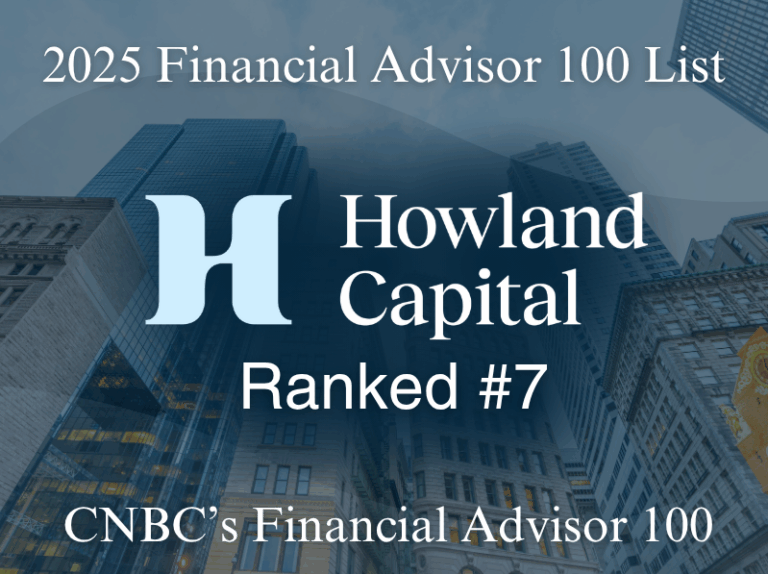It’s a New Year, the market just pulled an all-nighter, and the punch bowl is still half full.
The stock market finished 2024 at both a celebratory and precarious spot. Investors have many reasons to cheer following the S&P 500 Index’s second year in a row of returns exceeding 20%. The last time this happened was in the late 1990s. At the same time, the market starts 2025 at a point of historically high valuations fueled by sentiment akin to kids running down the stairs on Christmas morning.
U.S. stocks, as measured by the S&P 500 Index, returned 6% in the fourth quarter, including dividends, bringing the full year return to a whopping 29%! International stocks, as measured by MSCI All Country World Index ex-US, fell 6% in the fourth quarter, including dividends, bringing the full year return including dividends to positive 7%. Macroeconomic weakness in major economies such as China and Germany, a lack of buoyancy from large technology companies, and continuing wars weighed heavily on non-US stocks.
From a valuation perspective, the S&P 500 Index now sits at a 22x forward price-to-earnings multiple, which is two standard deviations above its 25-year average.
How did we get here, and what’s in that punch?!
The market was on a tear through the third quarter of 2024, up more than 20%, and fueled by a strong economy, falling interest rates, and normalizing inflation.
Then came the election, from which we draw three conclusions. First, a presidential winner was announced – without controversy – by Wednesday morning. The stock market prefers certainty to uncertainty. Second, Trump and the Republican party fared much better than many expected. Gridlock is often viewed as a favorable electoral outcome, because the status quo is better than the unknown. However, in the case of sunsetting Trump tax cuts at the end of 2025, this time the markets seem to be particularly excited by Republican dominance. Third, a torrent of predictions for lower taxes in combination with deregulation, falling interest rates and inflation (not to mention Elon Musk’s DOGE initiative) left the investment community downright giddy – at least when it comes to the outlook for stocks. The inference is that each of these positives translates to higher corporate profits. A rising future earnings trifecta implies higher stocks despite already lofty valuations.
Outlook: High Market Expectations, Low Visibility
Predicting the stock market is always difficult, if not impossible. Right now, Howland Capital’s Investment Committee finds the outlook particularly difficult to call – perhaps more so than at any other time in recent memory.
There are certainly positives on the horizon: expected deregulation with the incoming administration, continuing strong economic growth and normalizing inflation, falling interest rates, etc. Earnings expectations are rising, and that’s good for stocks, particularly at today’s demanding valuations.
However, it is too early to decipher the difference between election-winning campaign promises and reality. Widely-held beliefs compound this uncertainty that some of Trump’s campaign commitments – even lower corporate tax rates, deportations, and tariffs – could present major risks to inflation, and therefore interest rates and stocks unless offsets are identified.
Mass deportations, on the order of 10 million or more people, could be costly and result in both labor shortages and inflationary wage pressures. Simply put, immigration has been a key ingredient to a growing and more productive workforce, which drives economic growth. This growth driver is now at risk.
When it comes to levying tariffs on imports from major trading partners such as Europe, China, Canada, and Mexico, there appears to be broad consensus among leading economists that such actions could lead to retaliation and skyrocketing prices to U.S. consumers. Having just come through a period of high inflation, U.S. consumers and politicians alike know how damaging rising consumer prices can be.
Could Trump be serious, and if so, what are the offsets? These are key questions that remain unclear. Lower corporate taxes may provide an offset to consumer price pressures, but unless economic growth meaningfully accelerates, the dangers to growing our already-bloated federal deficit also seem obvious. Perhaps the punch bowl is half empty instead.
In addition, Elon Musk’s extra-governmental DOGE initiative is hard to believe. Musk has achieved the impossible before but landing on Mars might be easier than lopping $2 trillion from government spending, especially when it would have to include “third rail” items such as Medicaid/care and Social Security entitlements. Cutting defense spending seems equally unlikely given the current geopolitical situation.
Beyond the obvious, what about other uncertainties? Buying Greenland, taking back the Panama Canal? NATO, China, Russia. These all present significant risks, and for Trump to get what he wants on these matters, he will have to be willing to follow through. He does seem to measure his own presidential success – at least in part – by the performance of the U.S. stock market. But the consequences of implementing some of his proposals, intentional or not, may muddy the stock market waters. Again, uncertainty makes markets jittery.
In conclusion, the investment landscape is rapidly evolving and could be set for major changes. There are many reasons to be excited by the prospects for stocks, but major questions remain, expectations are high, and valuations are waving a caution flag.
If the U.S. can adeptly avoid obvious land mines, and the incoming administration can live up to its economy-stimulating hype, we see a path forward to rising stock prices fueled by better-than-expected earnings growth. These are big but not impossible “ifs.”
Howland Capital’s recommendation during times like this is to get ready for a bumpy ride. Please continue communicating cash needs so we can plan ahead and help weather any storms. Otherwise, we will continue to keep client portfolios invested for the long term, as timing the markets is rarely successful.
